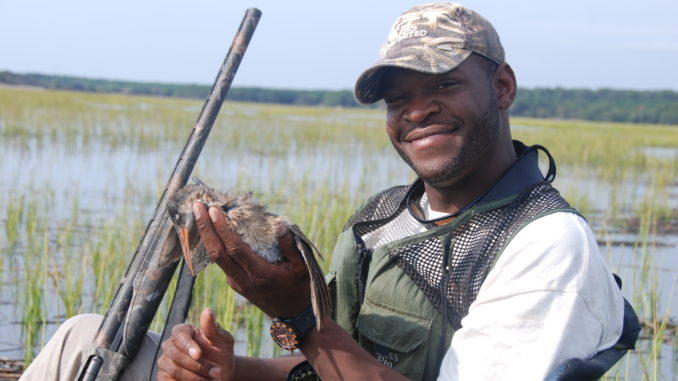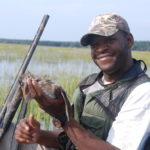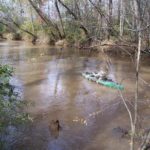
Early waterfowl seasons call kayakers to arms
Usually, this column discusses ways to target specific fish species from a paddle boat, including rigging, gear, equipment and places to fish.
Put your fishing gear away and grab your shotgun, because as good a month as September can be for fishing, it’s also a great time to chase some early season migratory waterfowl.
Both Carolinas permit hunting of teal, Canada geese and some lesser-known, web-footed fowl like rails, gallinules and marsh hens during September. Conventional tactics of these latter species usually included Grandpa and some of his hunting brethren sculling along in a wooden pirogue or skiff from the rear of the craft while a shooter perched up front waiting for flushing fowl.
Today’s paddle boats, specifically kayaks, provide more than stable platforms from which to shoot, and many models are now offered in camo patterns. Add in the ease of propulsion, sometimes even hands-free with many of the pedal-propelled craft that are flooding the market, and that allows a hunter to hunt alone or allows a pair or group of hunters to spread out to keep birds moving.
Canada geese
Geese spend most September mornings feeding or trading between roosting and feeding sites, but by the middle of the day, they won’t be too far from water. Large reservoirs frequently hold loads of geese, and having become accustomed to volumes of boat traffic, they aren’t particularly bothered by a kayaker paddling around.
Choosing the right reservoir to hunt requires some research and scouting. Public lakes with plenty of shoreline homes make goose hunting either illegal or highly antisocial. A lake that supports a vast number of small coves and pockets off the main lake make it an ideal chessboard for playing hide-and-seek with Canada geese.
Jump-shooting geese on a big reservoir is a pretty simple strategy. Paddle around looking for concentrations of birds. Ideally, they’ll be ganged up inside an uninhabited cove or cut, and if they see you when you see them, they’ll either be uninterested or the entire flock will tend to swim further back into the cut, away from you.
If you’re hunting with a buddy, one of you ease down one side of the cut while the other either blocks the exit or eases down the other side. The excitement really builds when one or both paddlers reach the point where the birds have to pass on either side of the guns within range.
Unlike ducks, geese need some running room to go from sitting on the water to clearing the treetops, and flying through the trees behind them isn’t an option. When the flock bolts, the only way out is right over the shooter’s head. Recommended loads are BB or T shot with improved cylinder chokes.
Rails and marsh hens
In general, hunting marsh hens during September seems to be a lost art. The end result is a very sporting approach to both kayaking and hunting. Hunting marsh hens from a kayak is like looking for a needle in a haystack, except needles aren’t very good at playing hide and seek, and marsh hens are professionals at it.
The beauty of hunting marsh hens from a kayak is that boats can go anywhere the birds can go during the flood tides. In fact, it’s real easy to paddle over the top of a bird, because when you get close, they prefer to hide down in the grass mats or try to swim away just under the water rather than fly.
Hunting dates are typically split into a two-part season for marsh hens — including king, clapper, sora and Virginia rails — and common moorhens and purple gallinules. Wildlife agencies typically structure the season dates to coordinate with the prevailing full moon high tides.
“We try to plan the season dates when the tide is the highest during that early 6-day season,” said Dean Harrigal, the waterfowl project coordinator for the S.C. Department of Natural Resources. “At that time of year, the water gets high from the flood tide, and the grass has generally stopped growing and may even be receding a bit. That leaves the marsh hens and rails exposed for those few hours between sunrise and sunset.”
Teal
Floating or slowly paddling down a waterway in search of congregations of early season teal can be very effective if a hunter has previously identified a section of water that holds these tiny waterfowl.
Teal are notorious for showing up one day and being gone the next, so scouting is important, and float-hunting offers a great way to cover a lot of water when teal are just passing through.
Sometimes, drought will cause rivers or smaller creeks to have areas that are only a few inches deep. Skinny-water areas often lie upstream of a deeper quiet pools that will hold ducks.
When floating a river or stream, hunters should stay on high alert when rounding a sharp bend or passing a large blowdown, as these areas often hold ducks out of the current.
Like hunting marsh hens, kayaks allow hunters to navigate shallow water, but unlike either rails or geese, teal will spook at the first sight of a boat. Hunters need to keep a low profile by crouching down behind a piece of camouflage or a strapped-in tree limb without arousing suspicion.
Bear in mind that spooking a flock of ducks is not always the kiss of death. Something about that spot attracted the birds in the first place, and with flocks on the move, setting up in gun range of that area — at least for a half hour or so — may find more ducks winging their way into shotgun range.
After the hunt, impress your friends at the dinner table with the waterfowl variation of this recipe.






Be the first to comment